Celtic Knots on a hex lattice
post by Ben (ben-lang) · 2025-02-14T14:29:08.223Z · LW · GW · 10 commentsContents
11 comments
I recently messed about with Celtic knot patterns, for which there are some fun generators online, eg. https://dmackinnon1.github.io/celtic/ or https://w-shadow.com/celtic-knots/. Just as addictive to doodle as the 'cool s' (https://en.wikipedia.org/wiki/Cool_S) but with more cool.
However, everyone knows that its cooler to tile a plane with hexagons than squares. So I cooked up some tiles to make the Hex-grid equivalent of a Celtic Knot.
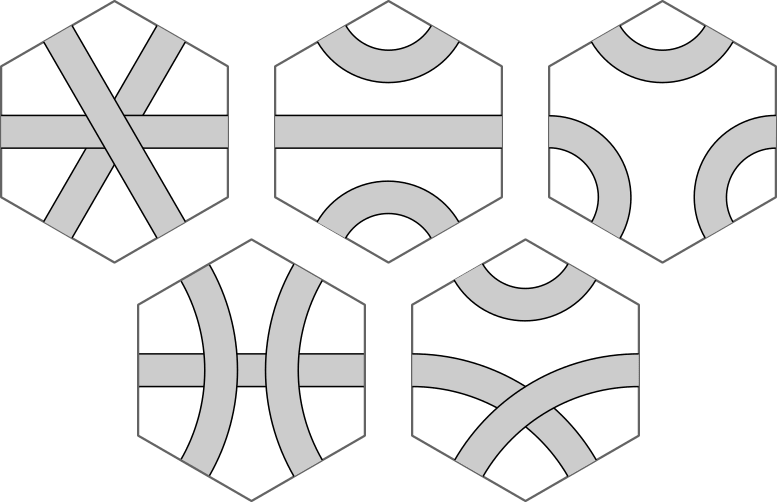
These tiles fit to make nice patterns. I think they look vaguely Arabic, and remind me strongly of the game Tsuro. (By the way, I would much prefer that game if the theme was some Italian fairies skate-boarding along the strands of spaghetti, it would fit the chaotic, sabotage heavy gameplay better than the wise Chinese dragon.)
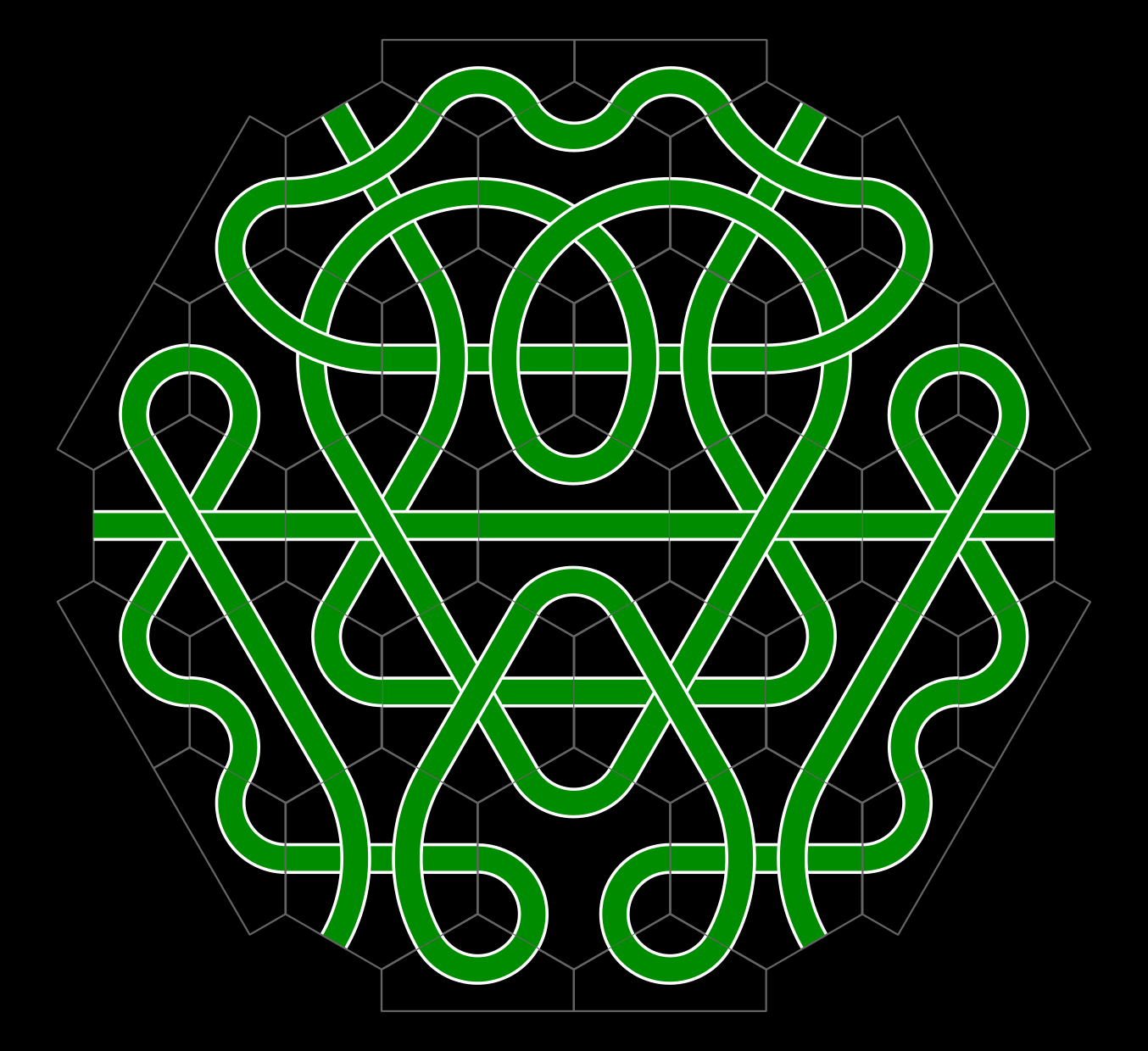
The edges are weird. I want to tile the edges with something like this (below), but that leaves "corners" that are not dealt with as above.
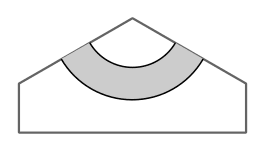
One option is to tile 3 edges with the tile above, and the other three edges (alternating) with the one below
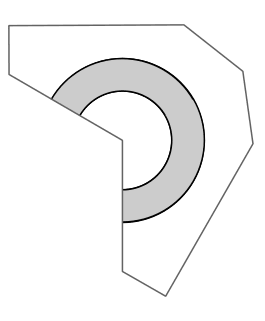
which gives something like this (adding minor embellishments to the "curls" that were crying out for a rod).
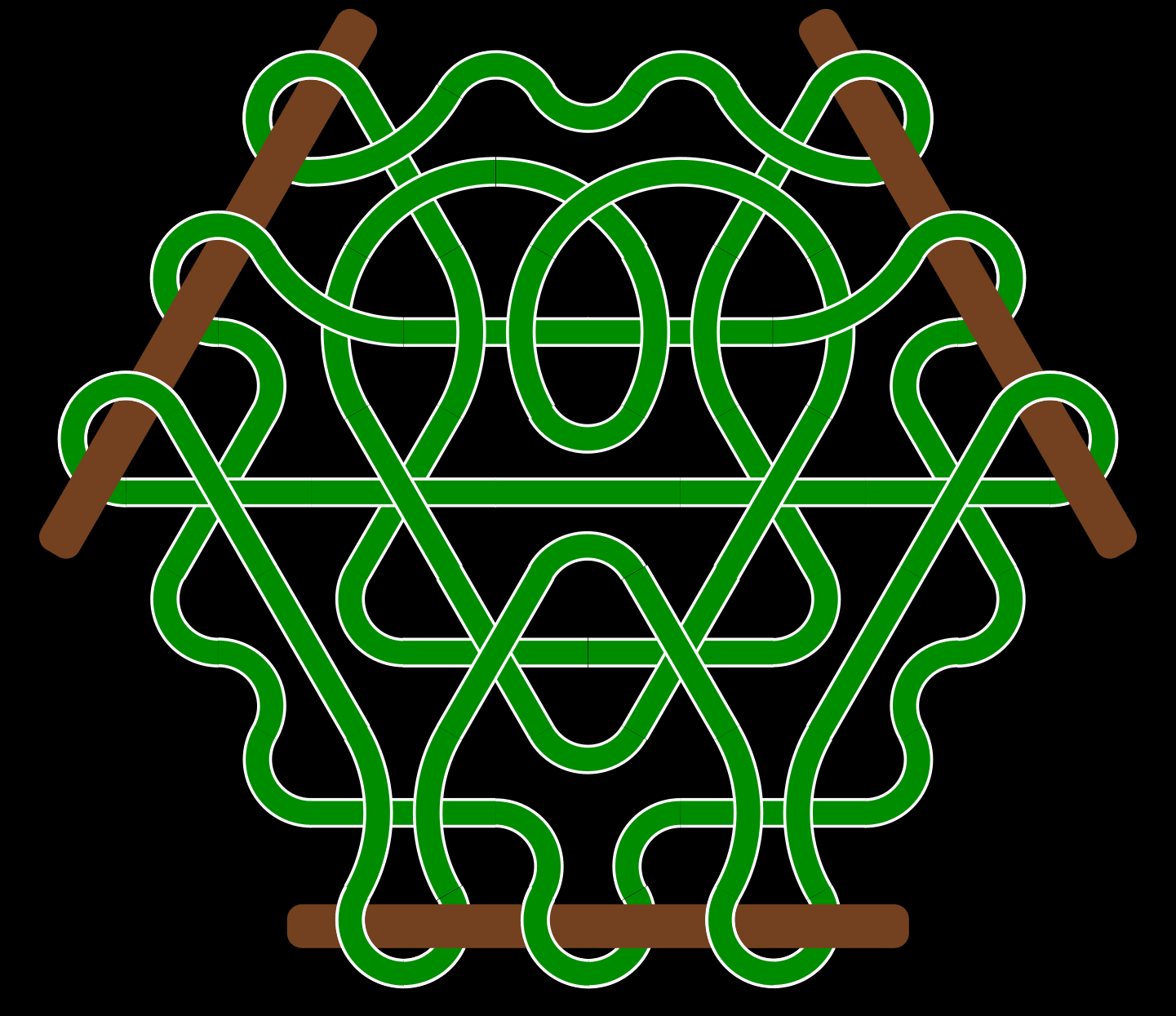
I am still not happy with the edges. I would rather have all three dealt with using the first (simpler looking) unit, then do something at the corners. Mathematics doesn't want to let me do that while pairing up the cords (a "corner hexagon" has 3 unmatched edges, unlike corner squares which have only 2. 2 loose ends can be paired up, but 3 obviously can't.)
What if I wasn't using strings (the ends of which match pairwise) but some hypothetical, Escher-like thing that had "ends" which annihilated in triples? Even if such a shape exists outside bizarre dreams and drug trips, then it would deal with the corners, but break the edges.
Why do the edges annoy me so much? Because I like symmetry. With hexes we can do snowflake symmetry:
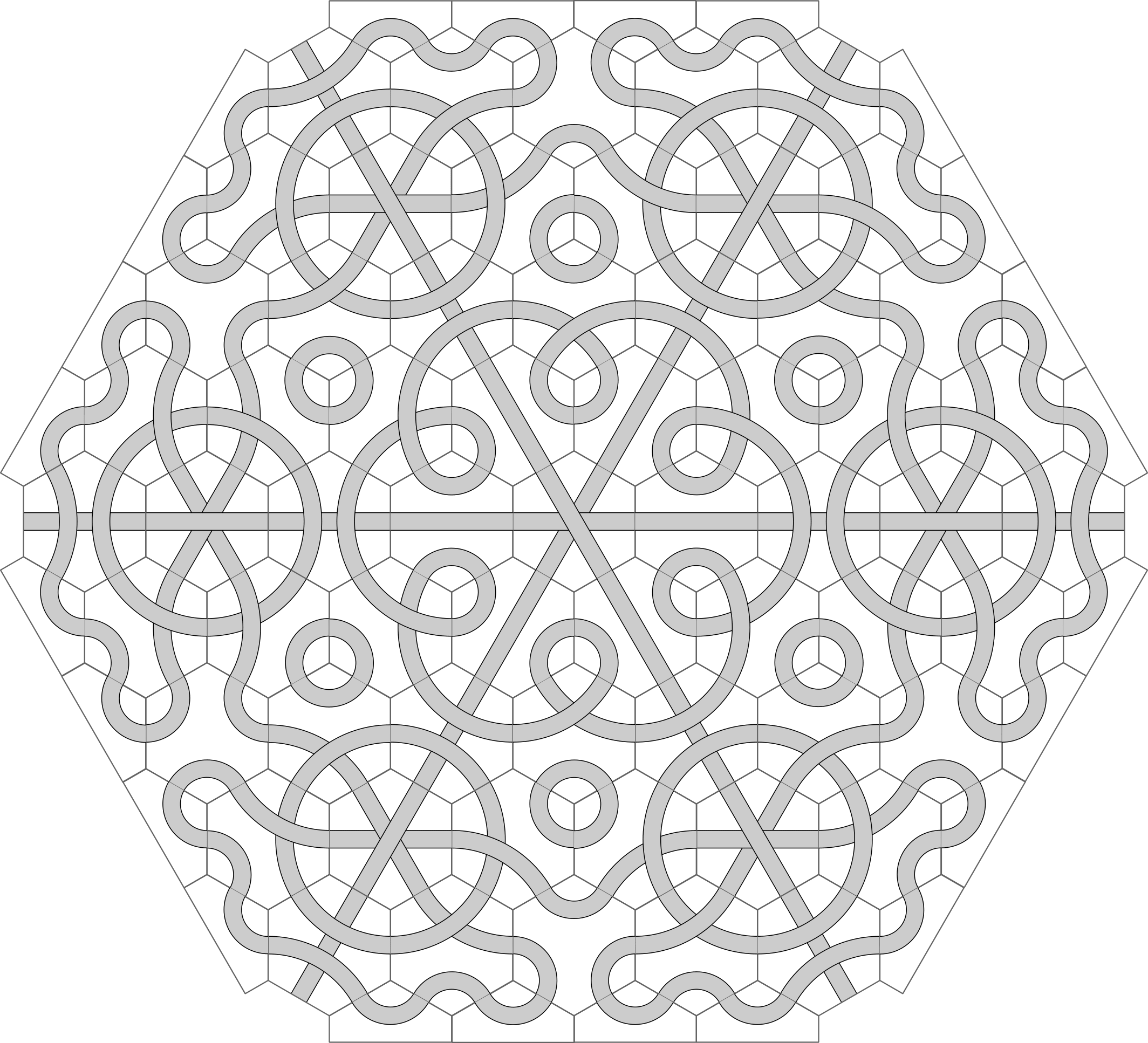
Well, almost. Sometimes one line has to go over another. We have unmatched ends at the corners, but using the other edge condition (with loops on alternating sides) would break the symmetry horribly.
Colouring in the one above,
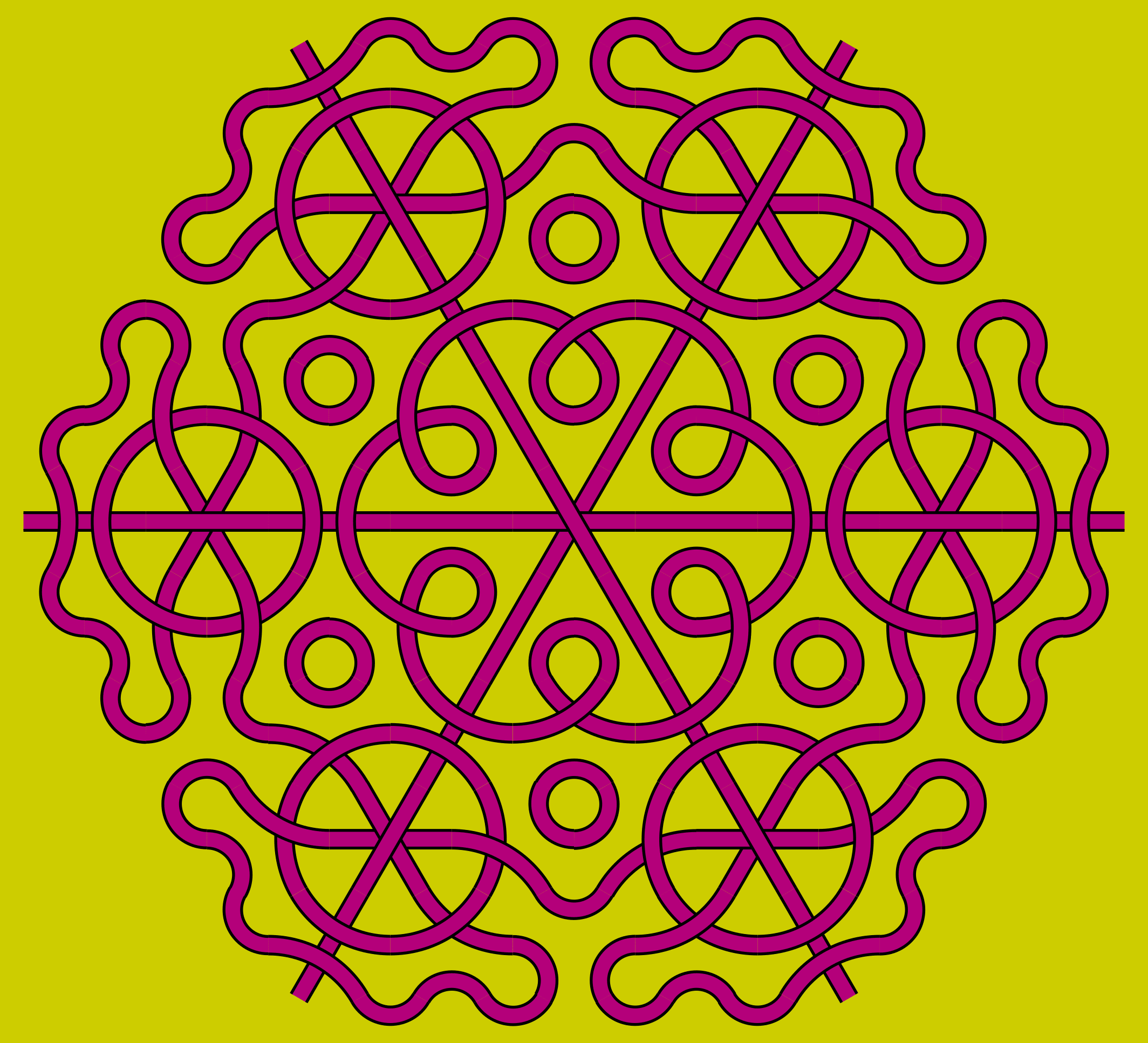
its almost pretty. Maybe not awful for a carpet.
A thicker path usually looks a bit better (this seems to also apply for normal Celtic knots). Each hex tile has some combination of straights (connecting opposite sides of the hex), corners (connecting adjacent sides) and arcs (connecting sides neither opposite nor adjacent). I think patterns making heavy use of arcs look best.
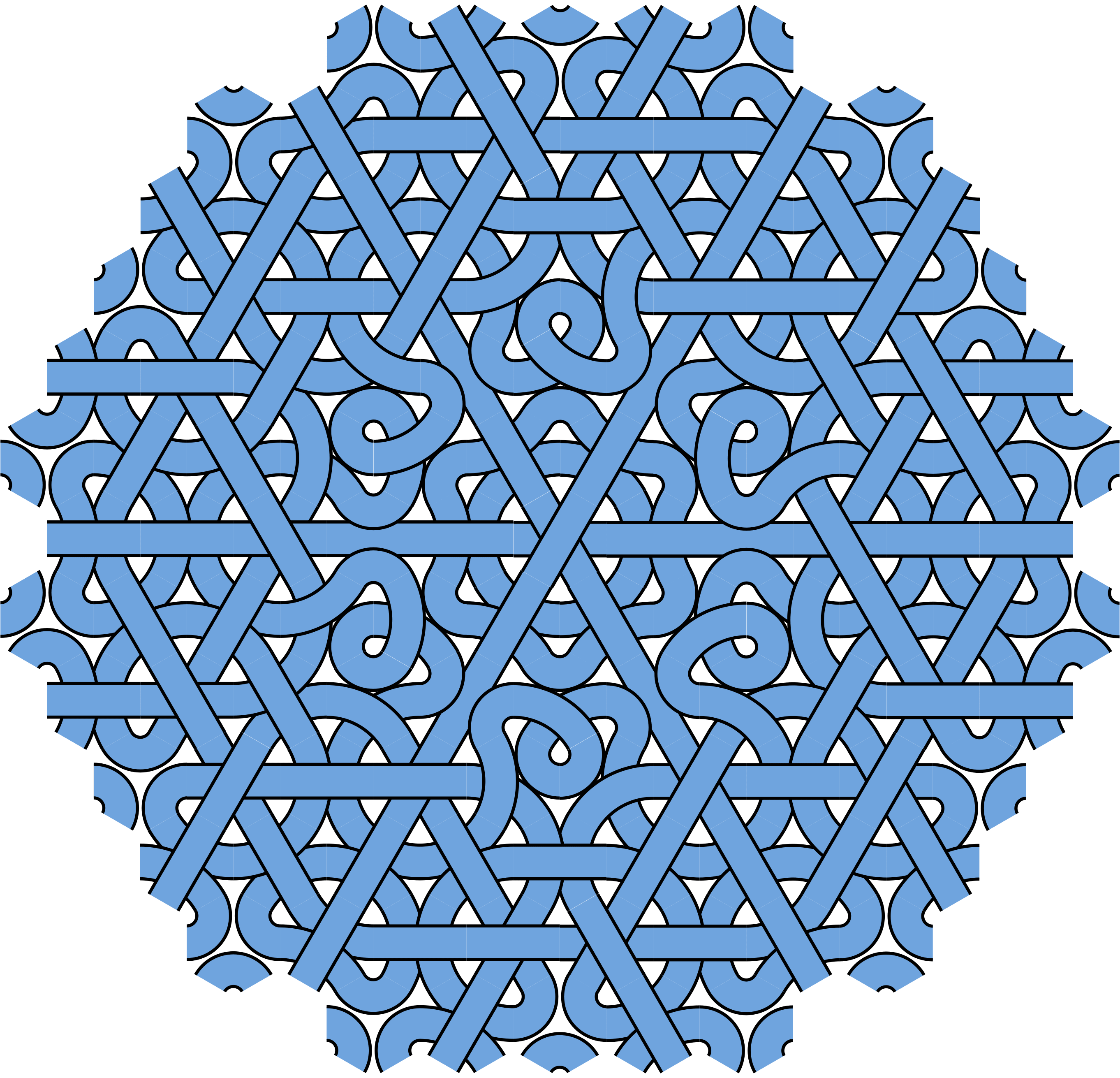
Leaving the edges alone entirely (as above) looks unfinished, which I think is possibly nicer than the normal situation where the edges look like they have been finished badly.
We can't tile a ball with hexagons, so we can't get out of our boundary problem by working on those. (Ball-tiling requires some pentagons, which is an issue, because 5 sided shapes means loose ends). We could roll up our "graphene like" sheets into carbon nanotubes, basically just periodic boundaries on one side, not very interesting, and still breaking our 6 fold symmetry. A torus would also break the symmetry but is possibly cool enough to get away with it.
If anyone wants to mess with this my odds and ends (eg the tiles) are in this folder as inkscape .svg images : https://drive.google.com/drive/folders/1BS42moNocDLIwFGeEAESK0ttX4CANo-5?usp=sharing
10 comments
Comments sorted by top scores.
comment by Oscar_Cunningham · 2025-02-14T16:08:48.629Z · LW(p) · GW(p)
Celtic knot enjoyers might also like the daily game Celtix where the objective is to separate five coloured strands of a Celtic knot.
comment by Measure · 2025-02-15T13:10:42.201Z · LW(p) · GW(p)
One property of most square-based knots I've seen that would be nice to preserve is if successive crossings alternate over/under.
Replies from: ben-lang↑ comment by Ben (ben-lang) · 2025-02-15T20:01:31.880Z · LW(p) · GW(p)
That's a very interesting idea. I tried going through the blue one at the end.
Its not possible in that case for each string to strictly alternate between going over and under, by any of the rules I have tried. In some cases two strings pass over/under one another, then those same two strings meet again when one has travelled two tiles and the other three. So they are de-synced. They both think its their turn to go over (or under).
The rules I tried to apply were (all of which I believe don't work):
- Over for one tile, under for the next (along each string)
- Over for one collision, under for the next (0, 1 or 2 collisions, are possible in a tile)
- Each string follows the sequence 'highest, middle, lowest, highest, middle lowest...' for each tile it enters.
My feeling having played with it for about 30-45 mins is that there probably is a rule nearby to those above that makes things nice, but I haven't yet found it.
comment by plex (ete) · 2025-02-15T12:36:53.018Z · LW(p) · GW(p)
Looks like Tantrix:
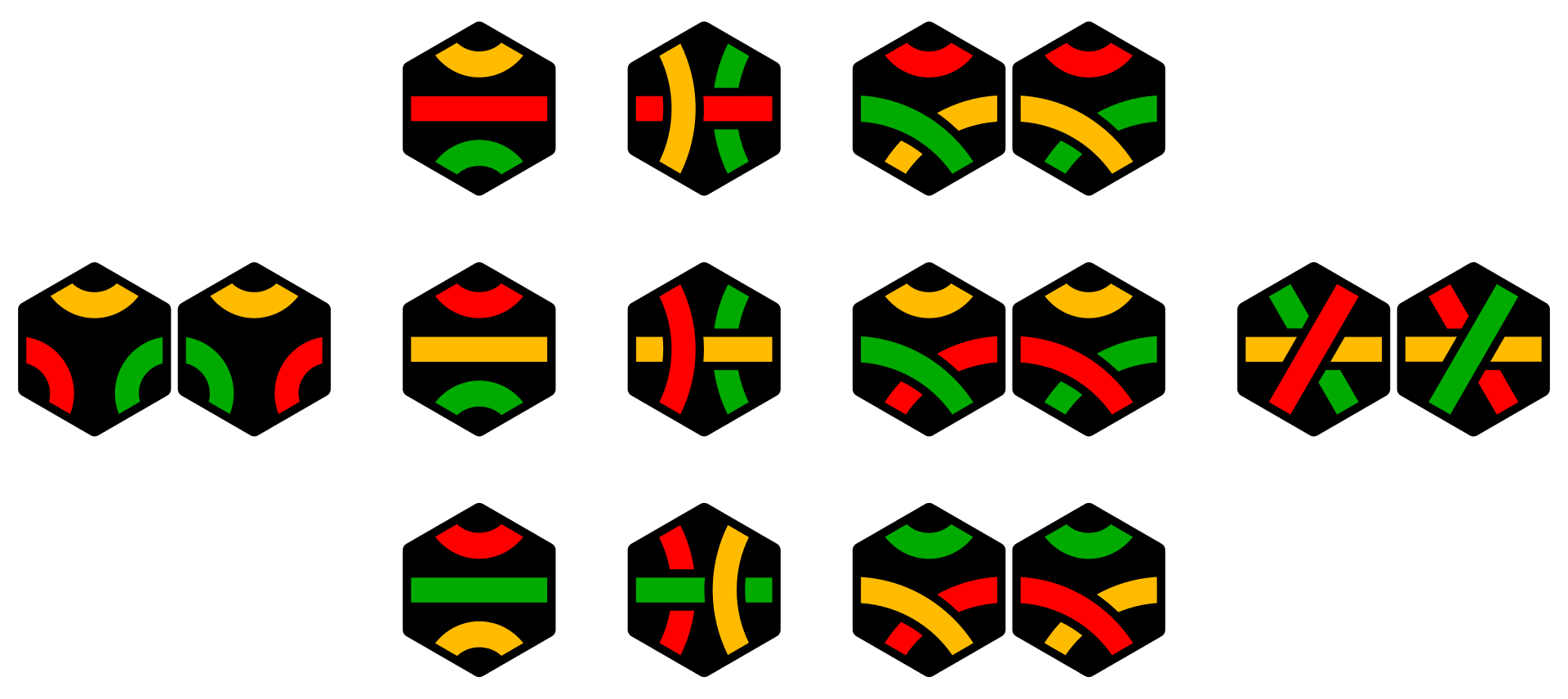
↑ comment by Ben (ben-lang) · 2025-02-15T19:15:44.174Z · LW(p) · GW(p)
I wasn't aware of that game. Yes it is identical in terms of the tile designs. Thank you for sharing that, it was very interesting and that Tantrix wiki page lead me to this one, https://en.wikipedia.org/wiki/Serpentiles , which goes into some interesting related stuff with two strings per side or differently shaped tiles.
comment by Shankar Sivarajan (shankar-sivarajan) · 2025-02-15T18:05:47.818Z · LW(p) · GW(p)
Hexagonal tessellations are certainly better than square ones, but we now have an einstein! Way cooler than anything regular.
Replies from: ben-lang↑ comment by Ben (ben-lang) · 2025-02-16T16:00:34.289Z · LW(p) · GW(p)
That is a cool idea! I started writing a reply, but it got a bit long so I decided to make it its own post in the end. ( https://www.lesswrong.com/posts/AhmZBCKXAeAitqAYz/celtic-knots-on-einstein-lattice [LW · GW] )
comment by Cole Wyeth (Amyr) · 2025-02-14T14:52:06.481Z · LW(p) · GW(p)
Cool!
comment by Vaniver · 2025-02-15T04:56:08.278Z · LW(p) · GW(p)
It looks like you only have pieces with 2 connections and 6 connections, which works for maximal density. But I think you need some slack space to create pieces without the six axial lines. I think you should include the tiles with 4 connections also (and maybe even the 0-connection tile!) and the other 2-connection tiles; it increases the number by quite a bit but I think will let you make complete knots.
Replies from: ben-lang↑ comment by Ben (ben-lang) · 2025-02-16T00:32:32.676Z · LW(p) · GW(p)
I stuck to maximal density for two reaosns, (1) to continue the Celtic knot analogy (2) because it means all tiles are always compatible (you can fit two side by side at any orientation without loosing continuity). With tiles that dont use every facet this becomes an issue.
Thinking about it now, and without having checked carefully, I think this compatibilty does something topological and forces odd macrostructure. For example, if we have a line of 4-tiles in a sea of 6-tiles (4 tiles use four facets), then we cant end the line of 4 tiles without breaking continuity. So the wall has to loop, or go off the end. The 'missing lines' the 4 tiles lacked (that would have made them 6's) would have been looped through the 4-wall. So having those tiles available is kind of like being able to delete a few closed loops from a 6s structure.
I might try messing with 4s to see if you are right that they will be asthetically useful.